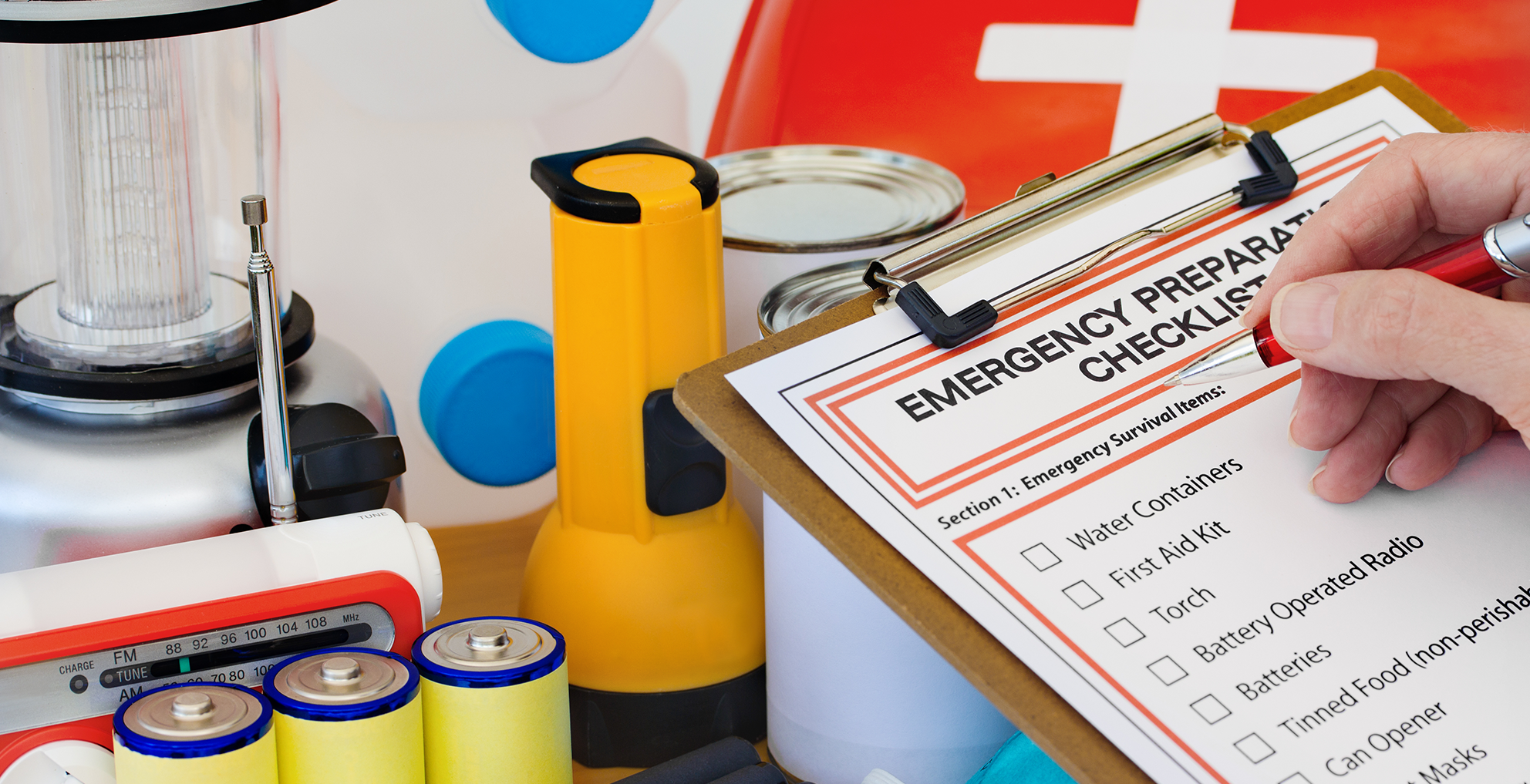
Disaster Preparedness
California is prone to many disasters including earthquakes, wildfires, flooding, storms and power outages. Most Californians will experience at least one of these at some point. Being prepared for the next emergency is the best thing you can do to ensure your health and safety. As September is Emergency Preparedness Month, here are some tips to help you prepare for an emergency.
Stay Informed
- For service and emergency alerts regarding your water, follow @sjwater_alerts on Twitter.
- In the event of an emergency, check out our social media feeds on Facebook, Twitter and Instagram.
- Sign up for AlertSCC – Santa Clara County’s free emergency alert system.
Plan Ahead
- Create an evacuation plan – where will you go if forced to evacuate?
- Create an emergency preparedness kit.
- Determine a family meeting place if family is separated during an emergency.
- Discuss a communication plan – Create a paper copy of family contact info for every member.
Build a Kit
Food
Store at minimum a several-day supply of non-perishable food – preferably foods that require little to no cooking.
For more information about food preparation, visit ready.gov/food.
Water
How to Prepare Water
According to the CDC, it is recommended that you store at least one gallon of water per person per day for at least 3 days (try to store a 2- week supply if possible). This water should be used for drinking and sanitation.
Unopened commercially bought bottled water stored in a cool, dark place is the safest source of water. If you must prepare water on your own, use food-grade containers.
Water Treatment
If there is any doubt about the quality of available water, it should be purified before use. Boil vigorously for 1 minute or use (unscented) liquid household bleach (sodium hypochlorite 5.25%) as a disinfectant. Add 1/8 teaspoon of bleach per gallon of water. After adding bleach, mix thoroughly and let water stand for 30 minutes before using.
For more information about water storage and treatment, visit ready.gov/water.
Supply Checklist
- Battery-powered or hand crank radio and a NOAA Weather Radio with tone alert
- Flashlight
- First aid kit
- Extra batteries
- Whistle (to signal for help)
- Dust mask (to help filter contaminated air)
- Plastic sheeting and duct tape (to shelter in place)
- Moist towelettes, garbage bags and plastic ties (for personal sanitation)
- Wrench or pliers (to turn off utilities)
- Manual can opener (for food)
- Local maps
- Cell phone with chargers and a backup battery
- Masks (for everyone ages 2 and above), soap, hand sanitizer, disinfecting wipes to disinfect surfaces
- Prescription medications
- Non-prescription medications such as pain relievers, anti-diarrhea medication, antacids or laxatives
- Prescription eyeglasses and contact lens solution
- Infant formula, bottles, diapers, wipes and diaper rash cream
- Pet food and extra water for your pet
- Cash or traveler's checks
- Important family documents such as copies of insurance policies, identification and bank account records saved electronically or in a waterproof, portable container
- Sleeping bag or warm blanket for each person
- Complete change of clothing appropriate for your climate and sturdy shoes
- Fire extinguisher
- Matches in a waterproof container
- Feminine supplies and personal hygiene items
- Mess kits, paper cups, plates, paper towels and plastic utensils
- Paper and pencil
For more information about disaster preparedness, visit ready.gov.
Additional Resources